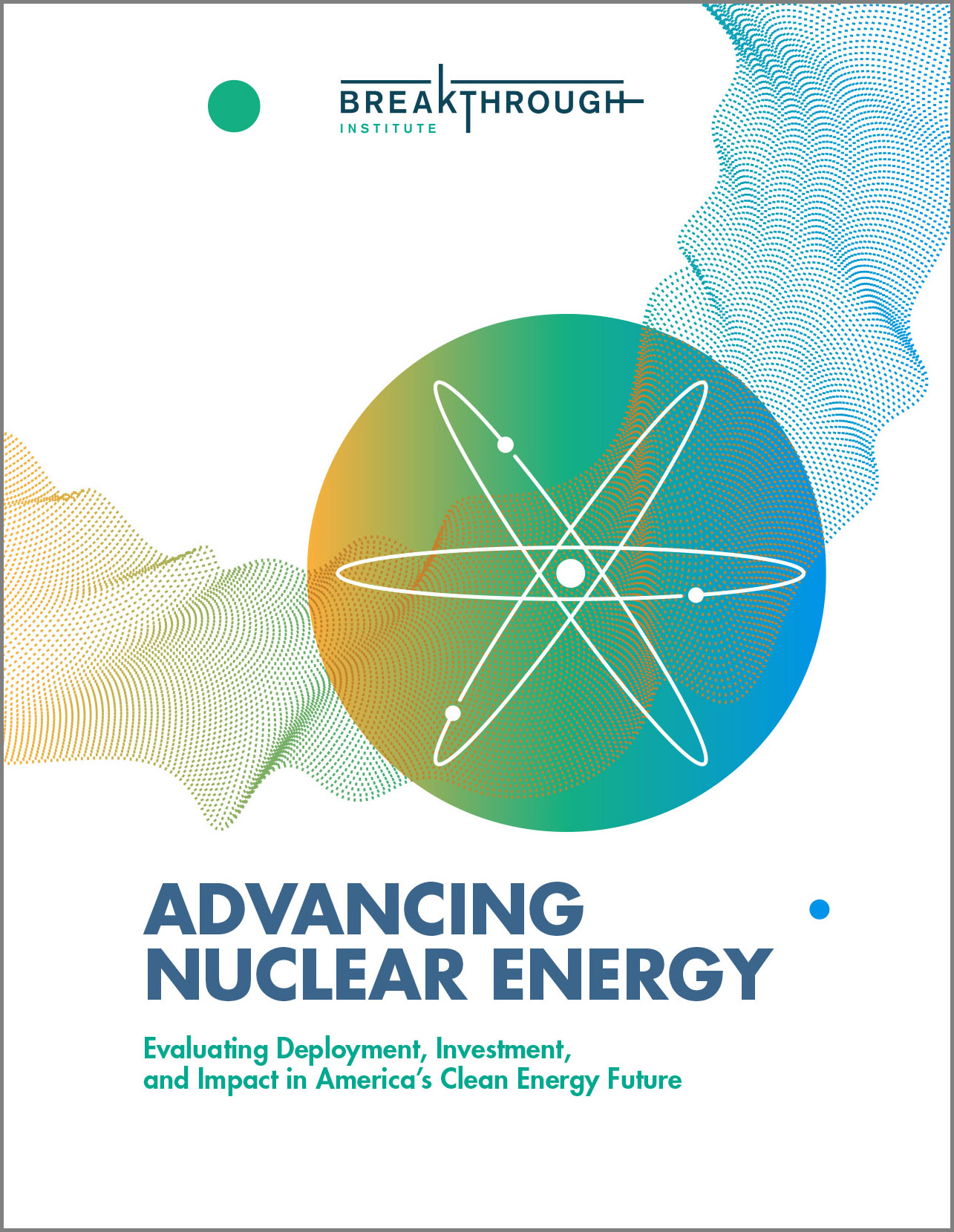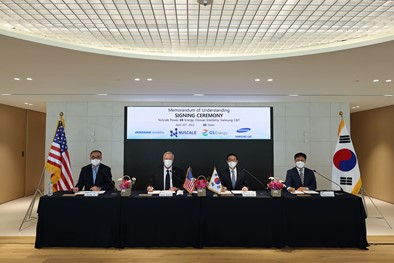Artist’s rendering of the IMSR Core-Unit. (Credit: Terrestrial Energy)
In the ongoing quest to mitigate the effects of climate change, new technology can create new solutions. Even today, however, coal is still a main source of power around the globe, often out of necessity. Many coal-burning plants have already been converted for gas or biomass, but these measures alone are not nearly enough to meet net-zero carbon goals. There is a better solution, however: repowering coal plants with nuclear technology—specifically, Generation IV reactors.
Pictured during a tour of the EBR-II site are, from left, Robert Boston, DOE-ID manager; Rep. Mike Simpson (R., Idaho); Secretary Granholm; Director Wagner; and Marianne Walck, INL deputy laboratory director for science and technology. (Photo: INL)
Energy Secretary Jennifer Granholm visited Idaho National Laboratory on August 3 to meet with INL staff, including director John Wagner, as she toured key research facilities on INL’s 890-square-mile site and the lab’s campus in Idaho Falls.
TVA's Watt Bar nuclear power plant.
As part of its strategy to achieve net-zero status by 2050, the Tennessee Valley Authority yesterday issued a request for proposals for supplying up to 5 GW of carbon-free energy that must be operational before 2029.
Byron nuclear power plant (Photo: Constellation)
“Keeping Illinois nuclear plants open is saving some customers $237 a year on average,” reads the headline of a recent CNBC article about the Climate and Equitable Jobs Act, which was passed by the Illinois legislature and signed into law by Gov. J.B. Pritzker in September 2021. The legislation includes a provision to keep Illinois nuclear power plants open to meet the state’s clean energy goals, even if the facilities are not profitable.
Idaho National Laboratory nuclear engineer Yasir Arafat (Photo: INL)
From refugee in Bangladesh to top nuclear engineer at Idaho National Laboratory, ANS member Yasir Arafat has led quite an interesting life, as described in a recent online profile written by Donna Kemp Spangler for the INL website. Arafat is leading the development of the Department of Energy’s Microreactor Applications Research Validation and EvaLuation (MARVEL) project at INL. The profile notes that MARVEL, which Arafat envisioned soon after joining INL in 2019, is scheduled to be “built and demonstrated at INL’s Transient Reactor Test Facility and connected to the world’s first nuclear microgrid within two years.”
Kiyoun Na, chief executive officer of Doosan Enerbility’s nuclear business group; John Hopkins, president and CEO of NuScale Power; Yongsoo Huh, president and CEO of GS Energy; and Byung Soo Lee, executive vice president of Samsung C&T, signed an MOU to collaborate on NuScale SMR deployment in Asia.
Small modular reactor developer NuScale Power has signed a memorandum of understanding with three South Korean companies—Doosan Enerbility Company, GS Energy Corporation, and Samsung C&T Corporation—to explore the deployment of NuScale’s VOYGR power plants in Asia.
Earth Day webinar participants were (clockwise from top left) Craig Piercy, Lindsey Walter, Mikal Bøe, and Shannon Bragg-Sitton. (Image: ANS)
The American Nuclear Society hosted the webinar “Earth Day: Reflections on the Future of Clean Energy” on April 22. Expert panelists discussed the best options for achieving emissions-free objectives, including goals in energy production, industrial activities, and transportation.
Ontario clean energy leaders. From left: John Gorman, president and chief executive officer of the Canadian Nuclear Association; Ken Hartwick, president and CEO of Ontario Power Generation; Todd Smith, Ontario’s minister of energy; and Mike Rencheck, Bruce Power president and CEO. (Photo: Bruce Power)
Bruce Power and Ontario Power Generation (OPG) have announced an agreement to work together to support new nuclear technologies in Ontario. Bruce Power operates the Bruce nuclear plant and OPG operates the Darlington and Pickering facilities.



 As energy security and environmental concerns prompt some countries to increase their reliance on nuclear energy or become first-time adopters of the technology, the U.S. government must decide whether it will offer financing for reactor exports—a move that poses financial risks but could create jobs, address global climate and energy security challenges, and limit Chinese and Russian influence. A new
As energy security and environmental concerns prompt some countries to increase their reliance on nuclear energy or become first-time adopters of the technology, the U.S. government must decide whether it will offer financing for reactor exports—a move that poses financial risks but could create jobs, address global climate and energy security challenges, and limit Chinese and Russian influence. A new 




 With the proper investment and policy support, advanced nuclear energy has the potential to become a key component of a future U.S. clean energy system, a new report from Berkeley, Calif.’s, Breakthrough Institute finds.
With the proper investment and policy support, advanced nuclear energy has the potential to become a key component of a future U.S. clean energy system, a new report from Berkeley, Calif.’s, Breakthrough Institute finds.



 The Nuclear Innovation Alliance (NIA), a nonprofit advocating for advanced nuclear, has announced the publication of a new report,
The Nuclear Innovation Alliance (NIA), a nonprofit advocating for advanced nuclear, has announced the publication of a new report, 
